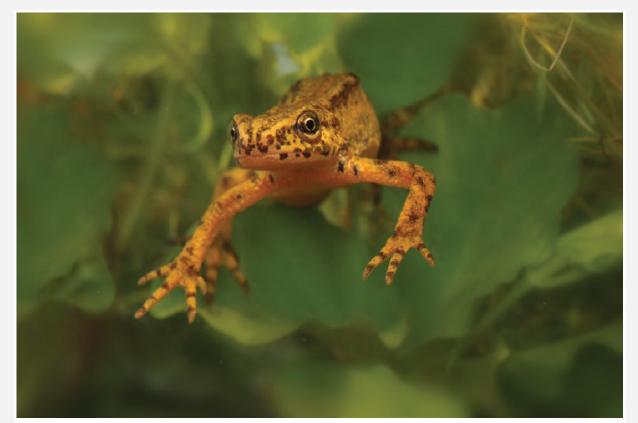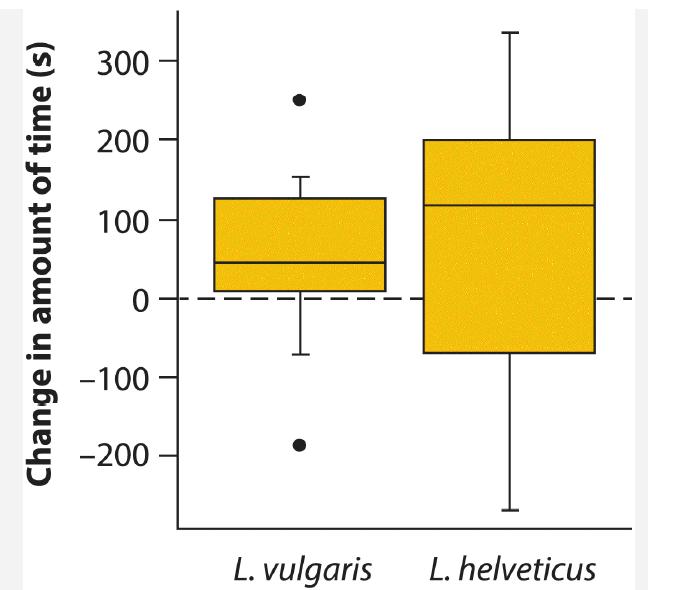In many animal species, individuals communicate using ultraviolet (UV) signals, such as bright patches of skin or
Question:
In many animal species, individuals communicate using ultraviolet (UV) signals, such as bright patches of skin or feathers, that are visible to one another but invisible to humans. Secondi et al. (2012) investigated the role of UV colors as sexual signals in two closely related species of Lissotriton newt, by asking whether females find males of their own species more attractive when UV radiation is present than when UV light is absent. Each trial consisted of confining a male newt to one end of an aquarium and measuring how much time a female of the same species chose to spend near the male (rather than at the opposite end of the aquarium). Each male was tested both under natural light conditions (UV light present) and when UV light was absent (by using a UV filter). The box plots in the following figure (data from Secondi et al. 2012) show the difference between the two treatments in the time females spent near the males. A positive number indicates that a female spent more time near the male when UV light was present, and a negative number indicates that she spent less time near the male when UV light was present.


For both species, the authors tested the null hypothesis that UV light treatment had no effect; that is,  Mean change in time females spent close to
Mean change in time females spent close to Test results for the two species are as follows, along with 95% confidence intervals for the mean change.
Test results for the two species are as follows, along with 95% confidence intervals for the mean change.


Using these results, indicate whether the following statements are true or false. Explain your answers.
a. The null hypothesis was rejected in the case of L. vulgaris but not in the case of L. helveticus at significance level 0.05.
b. UV light treatment affects the attractiveness of male L. vulgaris to females but has no effect on the attractiveness of male L. helveticus.
c. The weight of evidence against the null hypothesis was stronger in L. vulgaris than in L. helveticus.
d. The magnitude of the effect of UV treatment was greater in L. vulgaris than in L. helveticus.
Step by Step Answer:

The Analysis Of Biological Data
ISBN: 9781319226237
3rd Edition
Authors: Michael C. Whitlock, Dolph Schluter





